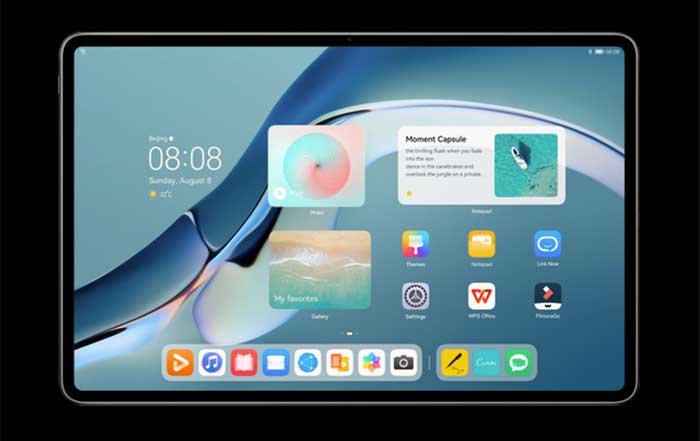Huawei has officially announced its own operating system called HarmonyOS or Hongmeng OS. It is said that the operating system can be used across different devices from smartphones, smart speakers, and sensors. A microkernel-based distributed OS will be released as an open-source platform worldwide encouraging adoption. Huawei will also establish an open-source foundation and an open-source community to support more in-depth collaboration with developers. HarmonyOS is like a compact operating system with having a powerful functionality which makes it appealing for the developers to use. With this operating system, developers can create their apps once, and deploy them across a range of different devices. HarmonyOS noting that it will support ranges of apps such as HTML5, Linux, and Android apps will be compatible. It will also support Kotlin, Java, Javascript, C, and C++. CEO Richard Yu has stated that the operating system was future-oriented and designed to be more smooth and secure, also it will be completely different from Android and iOS (Apple’s Operating System). Harmony OS is part of Huawei’s play into the so-called Internet of Things.
Back in May 2019, the US government has decided to put a suspension in supporting Huawei thru Google Android license because of its security threat. As a result, the ban could prevent the Chinese firm from getting the key hardware, and software including the smartphone chips and elements of the Google Android operating system, which have the vast majority of smartphones in the world, including Huawei. Consumers who already owned Huawei smartphones were largely unaffected. But the blacklist limited Huawei to the public version of Android for new devices, which cuts it off from Google apps and services such as Gmail, and Google maps, social media applications such as WhatsApp, Facebook, Instagram. Huawei has been working so hard to release its own operating system to support its consumers. Huawei has planned to launch HarmonyOS on smart screen products before expanding it to work on other devices over the next three years. The first that will implement the said operating system will be the Honor Smart Screen (Huawei Honor Vision and Honor Vision Pro, which is due to be unveiled in the same year. The focus of the operating system will be the products for the Chinese market before Huawei expands it to the other markets.
The CEO of Huawei, Richard Yu has stated that this HarmonyOS is completely different from Android and iOS because of the ability to scale in different kinds of devices. It appears that it’s designed to power and run on various factors. The aim of HarmonyOS is to create a single software that will work on different devices, such as smartphones, laptops, etc. that having a large amount of memory and power, down to smaller hardware devices such as sensors, which required a lower bandwidth solution. Also, it is powered by a multi-device IDE, multi-language unified compilation and also a distributed architecture kit. Huawei company hopes that the apps can work across different devices. For the time being, Huawei intends to continue using Android on its phones. The CEO also mentioned that the HarmonyOS could be ready for smartphones and laptops by the end of 2019 in China and mid-year in 2020 for the international market.
But CEO Yu stated that the HarmonyOS would be only used for smartphones and laptops if Huawei is not yet able to have access to Google’s Android or Microsoft Windows operating systems. Since Google’s services are blocked in China, Huawei uses a modified version of Android for its domestic market. However, if Huawei were to get banned from using Android internationally, this will affect the business market abroad according to a tech analyst. Huawei still prefers to use Android on its smartphones, but if things don’t go well, migrating to HarmonyOS will not be difficult as moving to the new operating system will take one or two days, the CEO also assured that using the new operating system can be very convenient.
Huawei has been reportedly working on its own operating system since 2012, but the company has said that it did not want to replace Android with its own operating system. But having HarmonyOS is like a plan B.
According to tech analysts, it will be a big challenge to Huawei to build up an operating system, to be a rival against the Android and Android Open Source Project.
Huawei said it has over 500 million registered users and 910,000 mobile application developers on Huawei’s platform. Huawei is the current largest smartphone brand in China and engaged with Apple for the second spot in terms of the global smartphone shipments, it is also equipped with all its smartphones with the popular Android system which is owned by Google, and its laptop products with Windows OS, owned by Microsoft.

